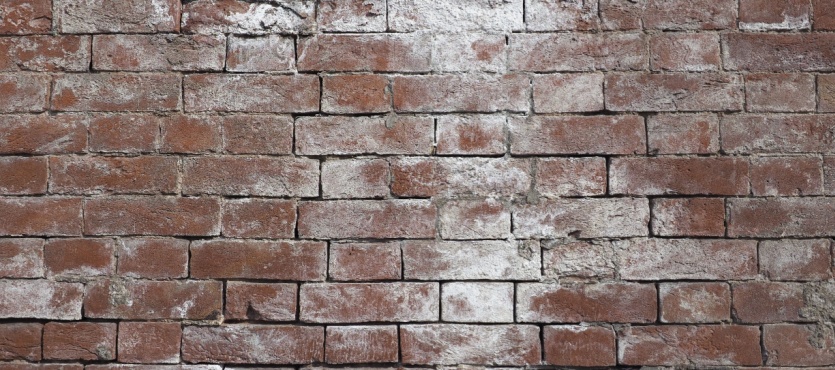Efflorescence is a common issue that affects brickwork, often causing concern among homeowners and builders. This white, powdery substance can appear on the surface of bricks and other masonry materials, potentially detracting from the aesthetic appeal of your property. Understanding what efflorescence is, why it occurs, and how to prevent and remove it is essential for maintaining the beauty and integrity of your brickwork.
What is Efflorescence?
Efflorescence is the crystalline deposit of salts that can form when water is present in or on brick, concrete, stone, stucco, or other building surfaces. It manifests as a white or light-colored powdery residue on the surface of the brickwork. While efflorescence itself is not harmful to the structure, it can indicate underlying moisture issues that need to be addressed to prevent more serious damage.
Causes of Efflorescence
Efflorescence occurs due to a combination of three factors: the presence of water-soluble salts, moisture, and a path for the salts to migrate to the surface. Here’s a closer look at each factor:
- Water-Soluble Salts: These salts can be present in the materials used in construction, such as bricks, mortar, or concrete. They can also come from the soil or groundwater surrounding the structure.
- Moisture: Water is the vehicle that dissolves the salts and carries them to the surface. Sources of moisture can include rain, snow, groundwater, and even internal sources like plumbing leaks or condensation.
- Migration Path: For efflorescence to occur, there must be a way for the dissolved salts to travel to the surface of the brickwork. This can happen through capillary action, where water moves through the porous structure of the bricks and mortar.
Preventing Efflorescence
Preventing efflorescence involves addressing the factors that contribute to its formation. Here are some effective strategies:
Use Quality Materials
Using high-quality construction materials with low salt content can reduce the likelihood of efflorescence. Choose bricks, mortar, and concrete that are specifically designed to minimize soluble salts.
Proper Waterproofing
Waterproofing your brickwork is crucial to preventing moisture from penetrating the surface. Apply a high-quality, breathable sealant to the exterior of your brickwork. This helps to repel water while allowing any trapped moisture to escape, preventing the buildup of salts.
Ensure Good Drainage
Proper drainage around your property is essential to prevent water from accumulating near the foundation and brickwork. Make sure that gutters and downspouts are clean and in good condition, directing water away from the building. Ensure that the ground slopes away from the foundation to avoid water pooling around the base of the walls.
Install Proper Flashing
Flashing helps to direct water away from vulnerable areas such as windows, doors, and roof intersections. Properly installed and maintained flashing can prevent water from entering the brickwork and causing efflorescence.
Control Internal Moisture
Controlling internal sources of moisture is also important. Ensure that your home is well-ventilated to reduce humidity levels. Address any plumbing leaks or condensation issues promptly to prevent moisture from entering the brickwork.
Removing Efflorescence
If efflorescence does appear on your brickwork, it can be removed using various methods. Here are some common techniques:
Dry Brushing: For light efflorescence, a stiff brush can often remove the powdery residue from the surface of the bricks. Make sure the bricks are dry before brushing to avoid smearing the salts.
Water Rinsing: Rinsing the affected area with water can help dissolve and wash away the salts. It’s important to dry the area thoroughly afterward to prevent further moisture from penetrating the brickwork.
Chemical Cleaners: For more stubborn efflorescence, a mild acid solution, such as diluted white vinegar or a commercial efflorescence cleaner, can be used. Apply the cleaner according to the manufacturer’s instructions, then rinse the area thoroughly with water. Always wear protective gear when using chemical cleaners and test a small area first to ensure it does not damage the bricks.
Professional Cleaning: If the efflorescence is extensive or persistent, it may be best to hire a professional cleaning service. Professionals have the expertise and equipment to effectively remove efflorescence without damaging the brickwork.
Preserving Your Brickwork’s Beauty
Efflorescence on brickwork can be a sign of underlying moisture issues that need to be addressed. By understanding the causes of efflorescence and taking steps to prevent it, you can maintain the beauty and integrity of your brick home. Regular inspections, proper waterproofing, and good drainage practices are essential for preventing efflorescence and protecting your brickwork from damage.
For expert help with preventing and removing efflorescence, along with a range of other masonry services, reach out to Turnbull Masonry. With their extensive knowledge and skills, they can ensure your brickwork stays attractive and robust, maintaining the value and beauty of your home for the future.

